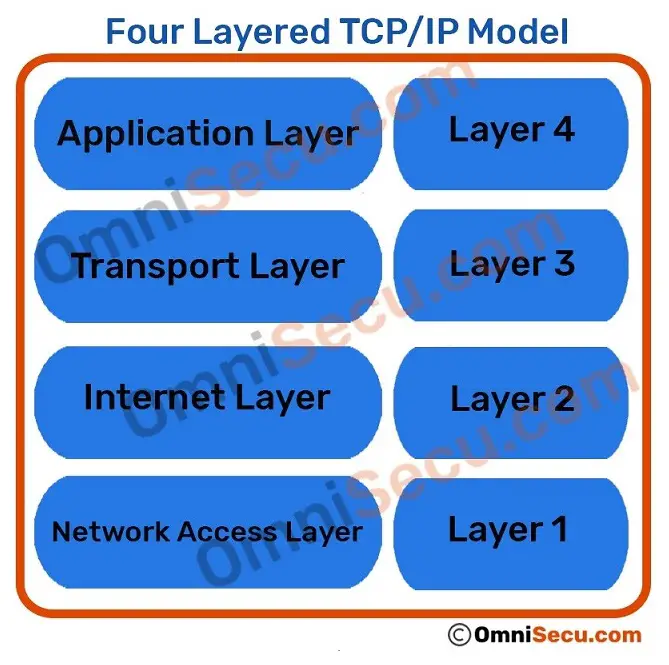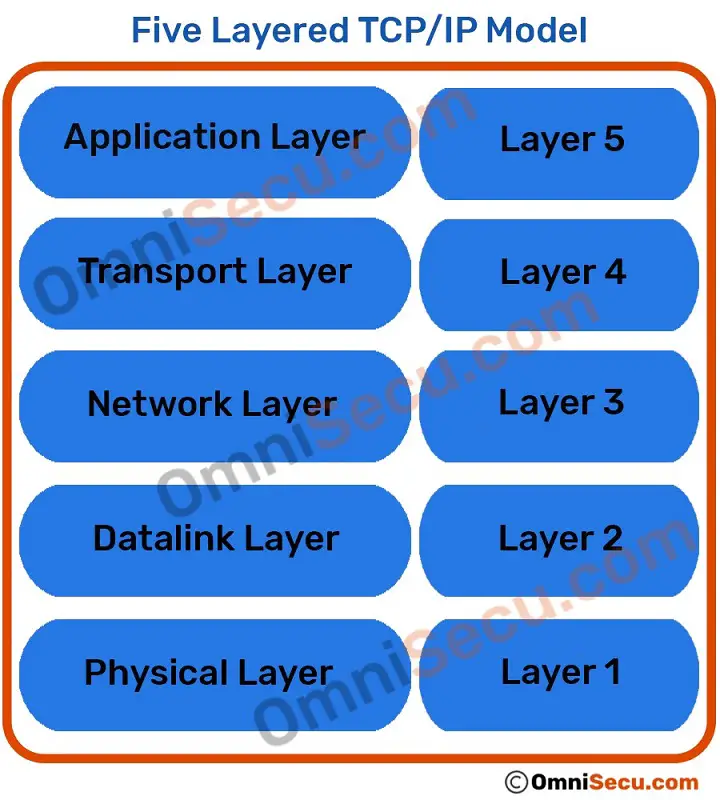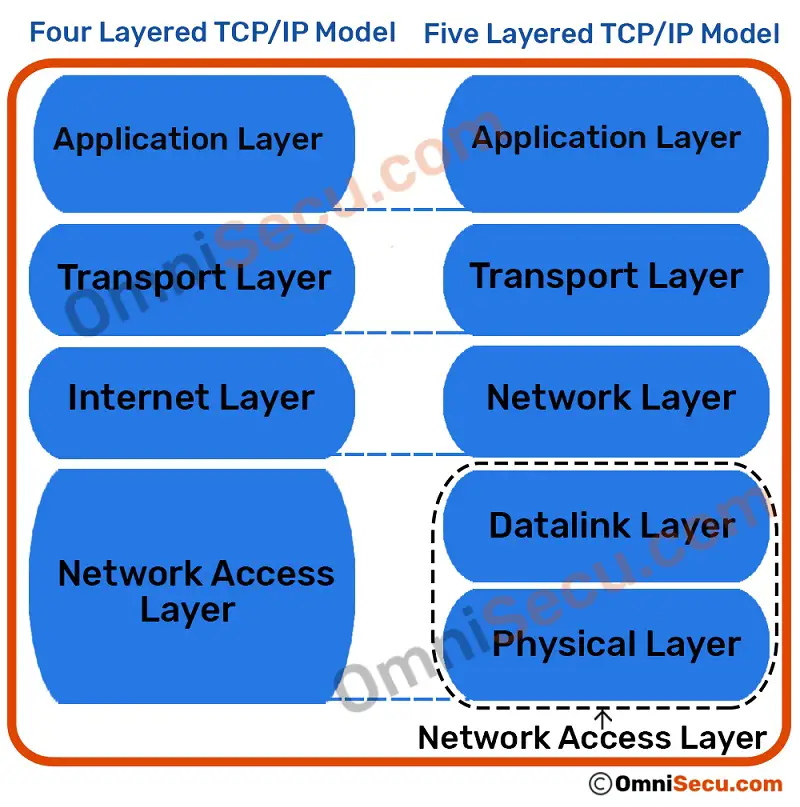Comparison between four layered TCP/IP model and five layered TCP/IP model
The TCP/IP protocol suite has many different protocols that allows computers to communicate. Two main protocols in TCP/IP protocol suite are TCP (Transmission Control Protocol) and IP (Internet Protocol). There are many other protocols also in TCP/IP protocol suite. Since TCP (Transmission Control Protocol) and IP (Internet Protocol) are the main protocols, the name of the protocol suite was selected as TCP/IP protocol suite.
Four Layered TCP/IP model
The original TCP/IP model created by Department of Defense had only four layers, as listed below.
- Layer 4 - Application Layer
- Layer 3 - Transport Layer
- Layer 2 - Internet Layer
- Layer 1 - Network Access Layer
The four layered original TCP/IP network model is shown in below image.

Five Layered TCP/IP model
The TCP/IP model which we refer these days is different from the original four layered TCP/IP model. We have an updated TCP/IP model which we refer these days, has five layers as listed below. Click the links to learn more about each layer of updated TCP/IP model.
- Layer 5 - Application Layer
- Layer 4 - Transport Layer
- Layer 3 - Network Layer
- Layer 2 - Data-Link Layer
- Layer 1 - Physical Layer

Comparison between four layered TCP/IP model and five layered TCP/IP model
Following image shows a comparison between four layered TCP/IP model and five layered TCP/IP model.